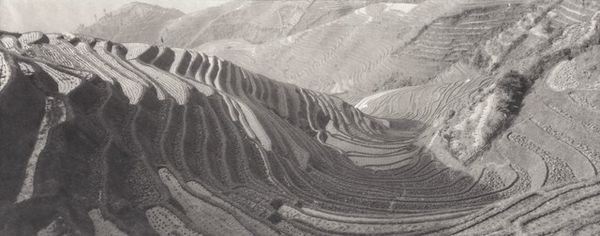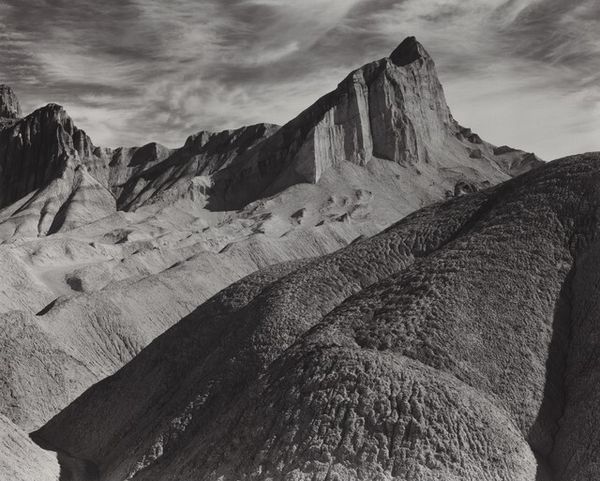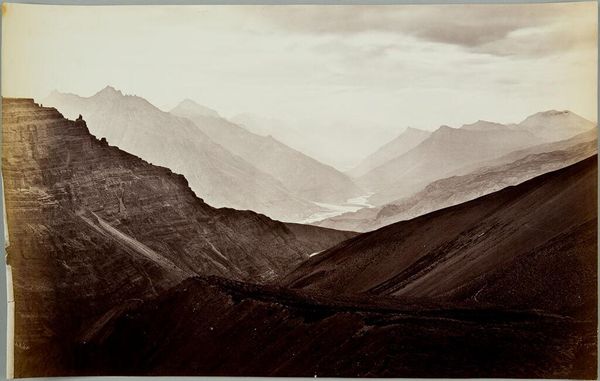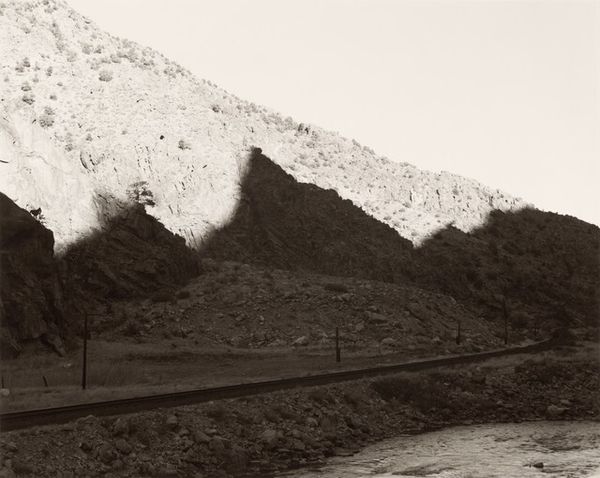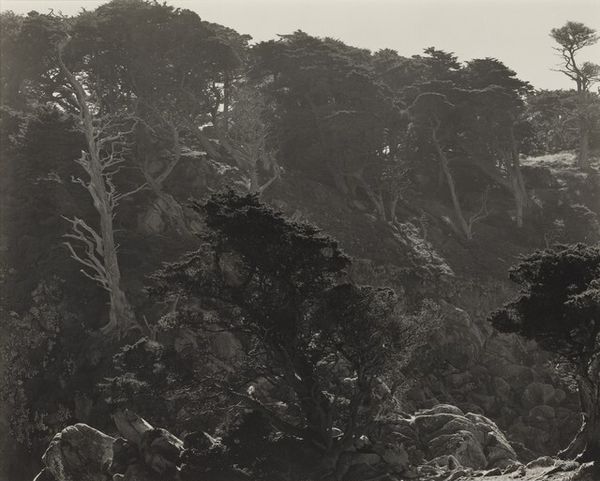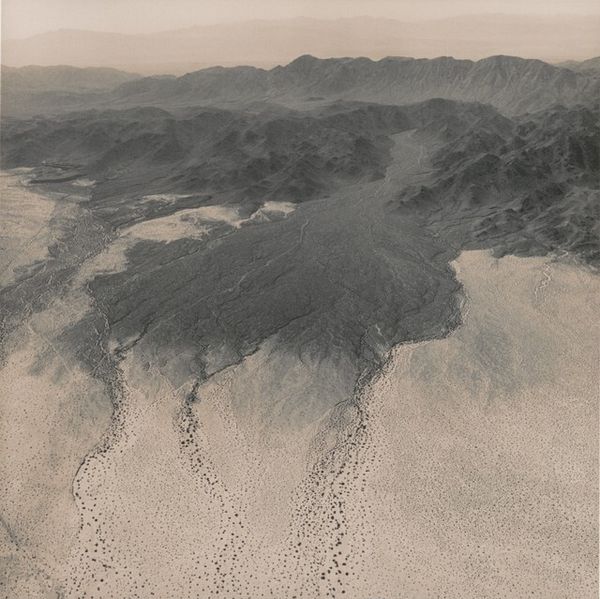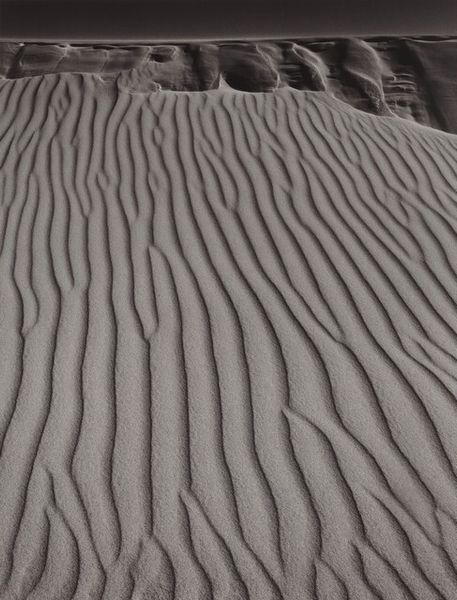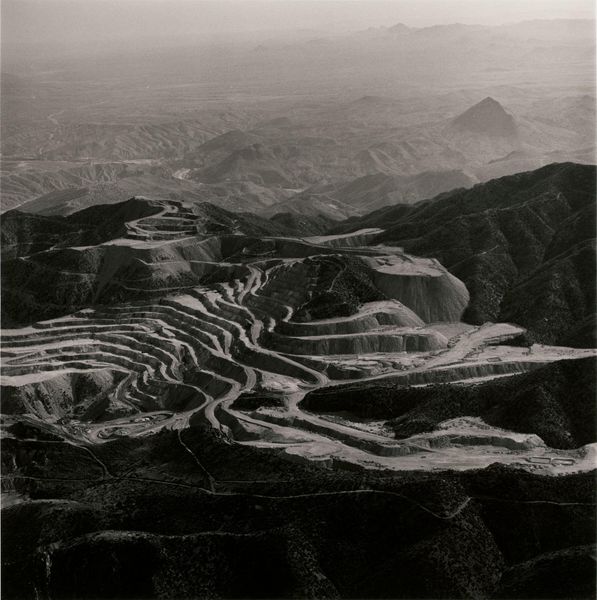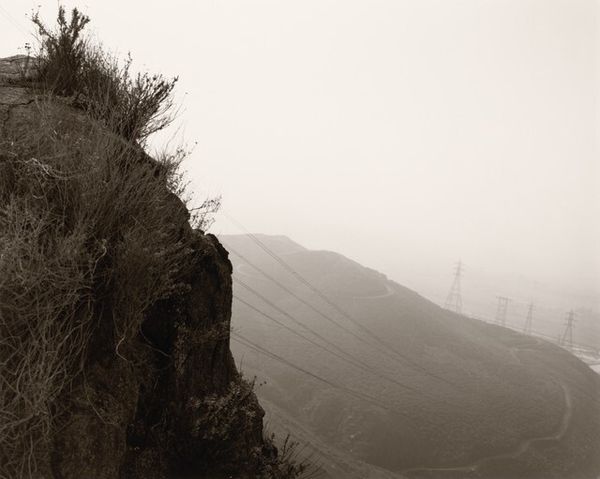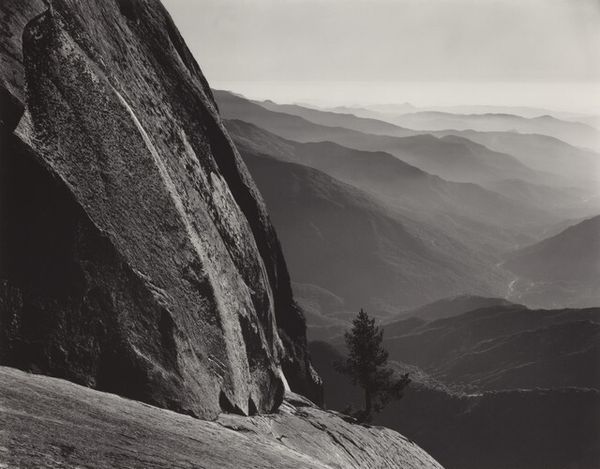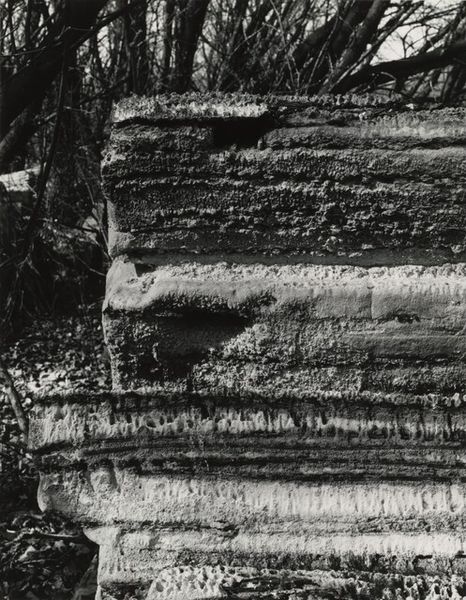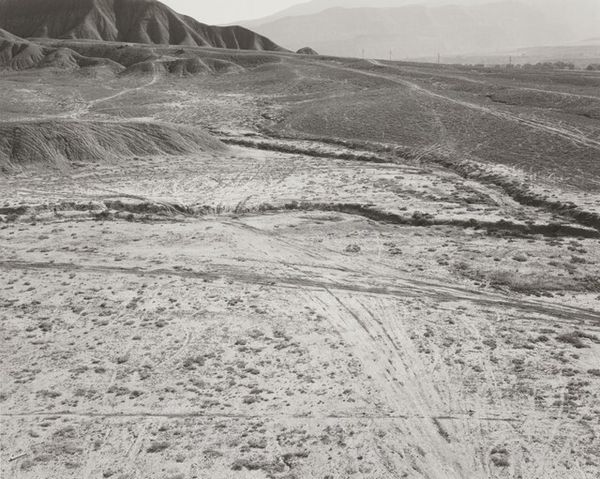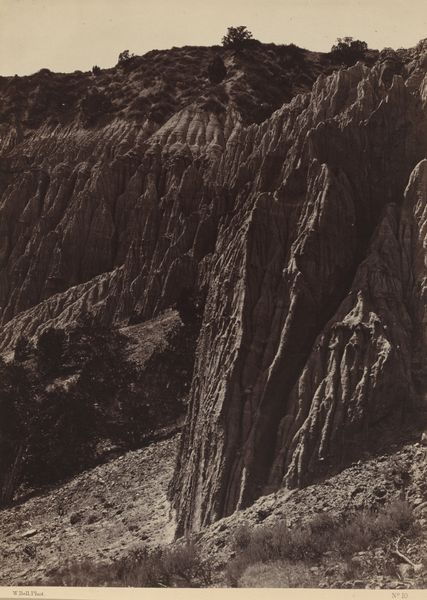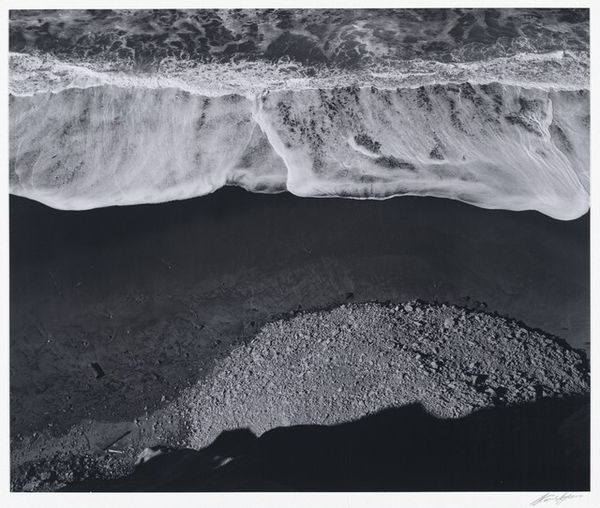
Zabriskie Point, Death Valley National Monument, California c. 1942 - 1980
0:00
0:00
photography, gelatin-silver-print
#
precisionism
#
sculpture
#
landscape
#
luminism
#
photography
#
environmental-art
#
gelatin-silver-print
#
modernism
Dimensions: overall: 39.4 x 49.7 cm (15 1/2 x 19 9/16 in.)
Copyright: National Gallery of Art: CC0 1.0
Curator: This is "Zabriskie Point, Death Valley National Monument, California," a gelatin-silver print by Ansel Adams, likely created between 1942 and 1980. Editor: Striking. It’s almost like looking at the surface of another planet, isn't it? Desolate, powerful… even a little intimidating. Curator: Adams, of course, is renowned for his technical mastery and dedication to capturing the American West. The precisionism in this image, the way he's rendered the textures and gradients of the landscape, it’s quite extraordinary. Think about the social context too, the developing national park system. These images served to promote conservation, an environmental awareness through a stark, often sublime beauty. Editor: But it's also crucial to acknowledge the politics inherent in that sublime beauty. Whose West is being celebrated, and at whose expense? We must look critically at the narratives being woven and the voices potentially silenced within them. Adams, through this environmental art, became emblematic of mid-century conservation. But we must think about whose access to these landscapes, and to this beauty, was – and remains – limited. Curator: Precisely, which makes this gelatin-silver print much more than simply a landscape study; this piece functions within broader conversations around land use, national identity, and access. This picture comes into focus within the institutional history of conservation. Editor: Absolutely, and the stark contrast and the black-and-white medium—it strips away the distractions, forcing us to confront the raw, almost brutal, geology. How do these photographic approaches become statements in themselves, particularly related to our interventions or lack thereof? The play of light and shadow makes me question concepts around vulnerability of environments as well as privilege of specific social demographics. Curator: Right, the deep blacks and radiant whites – Adams wields light as a sculptor might handle clay. The luminosity almost lends a spiritual quality to this scene, elevating it beyond a mere representation. Editor: A spiritual quality…perhaps tinged with a subtle unease, reflecting our own fraught relationship with nature and consumption? I'm moved, yet unsettled by its austerity. The artwork also challenges me to ask where do we find these sites of desolation and reflection now? Curator: Thank you, considering such reflection helps bring the work’s power into focus. Editor: My pleasure. It's essential to consider not only the artistic achievements, but also the sociopolitical framework influencing and emanating from this arresting photograph.
Comments
No comments
Be the first to comment and join the conversation on the ultimate creative platform.
